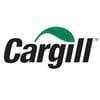Methods for Producing High Protein Feed Products from Evolving Corn Dry Grind Ethanol Plants
Published: February 11, 2025
Source : Kurt A. Rosentrater, Ph.D. / Iowa State University, Department of Agricultural and Biosystems Engineering.
Introduction
Over the last two decades the U.S. fuel ethanol industry grew exponentially. Now, large quantities of ethanol coproducts, are commonly available as feedstuffs for livestock both in the USA and in international markets. As described elsewhere, ethanol coproducts are added to livestock diets (both ruminants and monogastrics) primarily as sources of protein and energy, but other nutrients also, including spent yeast cells. Energy is provided by fat, fermentable fiber, and residual starch and sugars. Protein can be degraded in the rumen to varying degrees, depending on the specific coproduct. Mineral concentrations in coproducts can be somewhat variable, though, which must be considered when formulating diets for livestock, both to take advantage of beneficial nutrients as well as to prevent excessive dietary concentrations of others. As the ethanol industry continues to evolve, coproducts have emerged in the marketplace with different chemical compositions vis-à-vis traditional DDGS. The objective of this article is to briefly describe some common processes used for the manufacture of high-protein and high-fiber feed products that are emerging in the corn dry grind ethanol industry.
Traditional Ethanol Dry Grind Processing
The dry grind approach to ethanol processing (Figures 1 and 2) has been the predominant method for ethanol production in the U.S. due to lower investment costs and operational requirements vis-à-vis corn wet mill processing, including energy and water use. The entire corn kernel is used during the fermentation process (Liu and Rosentrater, 2011). Corn is screened then hammer-milled to a medium to fine grind meal/flour. The resulting flour is combined with water to form a slurry, and enzymes (alpha amylase) are added to begin to break the starch down into shorter glucose chains. The resulting mash is normally cooked and sterilized to kill non-desirable bacteria and to gelatinize the starch (although some companies do not have a cooking step). Once cooled, more enzymes (including alpha amylase and others) are added to continue to break down the starch. Yeast (Saccharomyces cerevisiae) is added to the mash in the fermentor, where the glucose is then metabolized into ethanol and carbon dioxide during anaerobic fermentation. After fermentation, ethanol is separated from the water and non-fermentable solids (both dissolved and suspended) in the distillation column. The remaining water and solids are collected (this is known as whole stillage). Whole stillage can be pressed, but it is more commonly centrifuged to separate the coarse solids from the dissolved solids; both streams will still contain a large quantity of water. The liquid containing the dissolved solids is often referred to as thin stillage. Thin stillage is frequently concentrated in evaporators to become condensed distillers solubles (CDS; Figure 3), also referred to as “syrup”. The wet coarse solids, or wet cake, which are collected from the centrifuge are commonly known as distillers wet grains (DWG, Figure 4) – which are generally 30-35% dry matter. Distillers wet grains and CDS can be combined and partially dried to form distillers wet grains with solubles (DWGS) with moisture contents generally between 45-50% (wet basis), or they can then be dried to about 10% (wet basis) moisture content to produce DDGS (Figure 5).
Figure 1. Typical corn-based, dry grind fuel ethanol plant (photo by K. A. Rosentrater)

Figure 2. Flow chart for dry grind processing of corn into fuel ethanol and coproducts (based on Liu and Rosentrater, 2011)

Figure 3. Condensed distillers solubles (also known as “syrup”, photo by K. A. Rosentrater).

Figure 4. Distillers wet grains (DWG) (photo by K. A. Rosentrater).

Figure 5. Distillers dried grains with solubles (DDGS) (photos by USDA (top) & K. A. Rosentrater (bottom)).

As a traditional rule of thumb, each 1 bushel of corn (~56 lb; ~25.4 kg) will be converted into approximately 2.8-2.9 gal (10.6-11.0 L) of ethanol, 17-18 lb (7.7-8.2 kg) of carbon dioxide, and 17-18 lb (7.7-8.2 kg) of nonfermentable solids (which include non-fermentable corn kernel components and byproducts produced by the yeast during fermentation), all of which are then sold as feed coproducts – either in wet or dry form. Put another way, each kernel of corn will result in about 1/3, 1/3, and 1/3 of the resulting fermentation products, respectively.
Numerous companies have been testing and commercializing modifications to the traditional dry grind process over the past few decades. Many of these have resulted in the development of new feed products beyond traditional distillers grains, and these alterations will shift the traditional 1/3-1/3-1/3 paradigm.
New Processes
As discussed in Liu and Rosentrater (2011), more than a dozen different technologies have been explored over the years that could be implemented in dry grind ethanol processing to concentrate or fractionate various nutrients from the corn kernel – especially proteins, lipids, and fibers – and to develop targeted, higher-values uses for these components. At the time of this publication, there are six key approaches that have commercial viability. These will be briefly summarized below. All of them implement a variety of physical and/or chemical separation techniques that are unique to each specific approach; some include pre-fermentation component separations, others use post-fermentation segregations; and some use various combinations. For more in-depth information, however, the reader is referred to each company’s respective website. There are additional companies working on various ideas and technologies for nutrient concentration, but those will not be covered here.
Figure 6. Flow chart illustrating the main steps in the FluidQuip approach to separating and concentrating nutrient components (adapted from https://fluidquiptechnologies.com and http://www.distillersgrains.org).

1. FluidQuip Method
Figure 6 illustrates the FluidQuip (https://fluidquiptechnologies.com) approach to nutrient concentration. This is known as the Maximized Stillage Co-Products (MSC) process. This process is installed after fermentation and separates components from the whole stillage. This process will result in a high protein stream that contains corn proteins, spent yeast cells, fine fiber, and other soluble materials (examples are shown in Figures 7 and 8). This higher protein stream is dried to produce a feed product with a minimum of 48% (as-is, or wet basis) protein content. This process impacts the thin stillage, which is then sent to the facility’s existing evaporator system. This system utilizes the existing whole stillage decanters for dewatering of fiber and other suspended solids.
Figure 7. Corn fermented protein product (> 50% crude protein) which is produced using the FluidQuip approach (photo by K. A. Rosentrater).

Figure 8. Corn fermented protein product (> 60% crude protein) which is produced using the FluidQuip approach (photo by K. A. Rosentrater).

Specifically, the MSC process will feed whole stillage to paddle screens as the first of several fiber separation stages, where the stillage is separated into a solids (i.e., cake) stream and a centrate (i.e., liquid – process water with dissolved solids) stream. The protein, yeast, fine fiber, oil, and solubles are washed through the screen while the coarse fiber and other suspended solids are carried over to the cake discharge. The cake from the paddle screens is then rehydrated and passed through another separation process that further separates the coarse and fine fiber from the protein centrate.
The second separation process consists of a pressure screen system, which uses high-pressure water to feed the fiber and protein stream over a concave screen. The screen allows the protein and soluble particles to pass through the screen while retaining the cake (or concentrated fiber) on the outside of the screen. The fiber cake is then hydrated again and fed to a perforated horizontal decanter; the remaining cake is then sent to the plant’s existing drier system to be dried into DDGS.
The protein centrate with the dissolved solids (including the oil and other minerals) is collected from the previous fiber washing steps where the stream has been processed through a high-speed centrifuge. The protein clarifier centrifuges are high-speed disc nozzle centrifuges designed to concentrate fine solids (especially proteins) and separate them from the centrate stream. From the clarifier centrifuges, proteins, fine fiber, and water exit as a “heavy” phase. Water, oil, and lighter particles will exit as a “light” phase. The concentrated protein from the clarifier underflow is then collected and sent to a dewatering step, via horizontal high-speed decanters. The dewatered protein cake is then sent to a ring drier to dry the product prior to storage and loadout. The final product is partially recycled to the paddle mixer, while the remaining product is pneumatically conveyed through the protein cooling system to product storage.
2. ICM Method
ICM, Inc. (www.icminc.com) uses a unit operations-based approach that can be integrated to achieve nutrient concentrations (Figure 9) and a variety of resulting feed products. These include pre-fermentation and/or post-fermentation modifications that systematically separate and dewater process streams and can be used in different combinations. ICM’s Selective Milling Technology (SMT) combined with Fiber Separation Technology (FST) can be used to produce high protein distillers dried grains (HP-DDG) and bran with syrup, or it can produce traditional DDGS. The Advanced Processing Package (APP) utilizes four separate technologies, SMT, FST, Feed Optimization Technology (FOT), and Thin Stillage Solids Separation System (TS4) to produce corn fermented protein, bran with syrup, and DDGS simultaneously.
Figure 9. Flow chart illustrating the main steps in the ICM approach to separating and concentrating nutrient components (based on https://icminc.com/process-technologies/ and http://www.distillersgrains.org).

Prior to fermentation, corn is subjected to coarse dry milling by roller mills, followed by a secondary wet grinding which is integrated into the cook process. This sequence of operations is known as SMT. This allows corn fiber to be removed downstream via FST as the fiber particles are not pulverized, which is the case with traditional hammermilling. FST utilizes counter-flow washing to separate the fiber, which is then dewatered by a rotary press. The FST process reduces the fiber load going to the fermenter and subsequent downstream processes, and thus increases overall plant throughputs and efficiencies.
After SMT and FST, facilities utilizing APP further separate and concentrate protein post-fermentation using FOT and TS4. FOT separates the whole stillage stream using two stages of separation, resulting in a liquid stream and a concentrated suspended solids stream containing concentrated proteins and yeast. TS4 removes suspended solids from the FOT liquid stream to concentrate the corn proteins and spent yeast cells. The resulting thin stillage has lower suspended solids, which allows for higher evaporative concentrations due to reduced syrup viscosity, which also improves corn oil recovery. Protein products recovered from the FOT and TS4 processes are combined to produce a feed product known as “corn fermented protein”, which can be dried in the plant’s existing rotary dryers. This product is targeted at monogastric markets, while the fiber (i.e., bran) and syrup streams are combined to produce a feed product targeted at ruminant markets since it is higher in energy.
3. Marquis Method
The approach that Marquis uses centers around flocculation technology to facilitate the separation of proteins, oils, and fibers (https://www.marquisincorporated.com). As shown in Figure 10, a flocculant is added after fermentation to the centrate (i.e., process water and dissolved solids, which results from centrifugation of the whole stillage). This stream is then subjected to dissolved air floatation (known as DAF) where fiber particles are removed from a stream rich in lipids (oils) and proteins (i.e., the flocs that float on the surface vs. the fiber particles which sink). Oil can be concentrated using traditional centrifugation, whereas the fiber is concentrated via dewatering and drying. Ultimately, the benefit of this approach to nutrient concentration is that only two additional unit operations are required – the DAF process, and dewatering the proteins. The resulting distillers grains (sold as ProCap) are substantially higher in protein content than traditional DDGS.
Figure 10. Flow chart illustrating the main steps in the Marquis approach to separating and concentrating nutrient components (based on https://www.marquisincorporated.com and http://www.distillersgrains.org).

4. D3Max Method
Figure 11 illustrates the approach used by D3MAX (https://www.d3maxllc.com). This process centers around sending the wet cake (i.e., distillers wet grains) from conventional dry grind ethanol production to a steam and acid pretreatment process, whereby corn fiber is broken down into fermentable carbohydrates, and then that stream is sent to a secondary fermentation where cellulosic ethanol is produced (i.e., D3 RINS). After secondary fermentation, this ethanol stream is then separated from non-fermentable materials via a secondary distillation system and then combined with the conventional ethanol stream. The residual wet cake solids and stillage are then processed using the traditional DDGS drying system. Because the entire wet cake stream from the conventional portion of the ethanol plant undergoes secondary processing, the resulting coproducts will have higher protein and oil levels due to the utilization of the grain fiber for ethanol production.
Figure 11. Flow chart illustrating the main steps in the D3MAX approach to separating and concentrating nutrient components (based on https://www.d3maxllc.com/technology).

5. Quad County Method
As shown in Figure 12, Quad County Corn Processors (https://www.quad-county.com) uses a slightly different variation. This process centers around sending the entire whole stillage stream from conventional ethanol production to a pretreatment process, whereby the corn fiber is broken down into fermentable carbohydrates, and then that stream is sent to a secondary fermentation where cellulosic ethanol is produced (i.e., D3 RINS). After secondary fermentation, this ethanol stream is then separated from non-fermentable materials via secondary distillation and combined with the conventional ethanol stream. Because the entire whole stillage stream from the conventional portion of the ethanol plant undergoes secondary processing, the resulting coproducts will have higher protein and oil levels due to the utilization of a substantial portion of the grain fiber for ethanol production. Further, pre-fermentation fractionation of corn starch using paddle screens can be used to provide substrate to secondary fermentation or other industrial/biochemical uses.
Figure 12. Flow chart illustrating the main steps in the Quad County Corn Processors approach to separating and concentrating nutrient components (based on https://www.quad-county.com and http://www.distillersgrains.org).

6. Novita Method
The approach that Novita (https://www.novitanutrition.com) has implemented to remove oil has been based on the soybean oil industry. Solvent extraction is used to remove the corn oil molecules directly from the DDGS, which thus results in a higher-protein DDGS product. Figure 13 shows a general flow chart that illustrates this extraction process. The resulting deoiled DDGS is shown in Figure 14.
Figure 13. Flow chart illustrating the main steps in the Novita approach to separating and concentrating nutrient components (based on https://www.novitanutrition.com).

Figure 14. Deoiled distillers dried grains with solubles (DDGS) which is produced using the Novita approach (photo by K. A. Rosentrater).

Conclusions
The grain-based ethanol industry has been dynamic for many years, and has a history of continual evolutions over the past several decades. This is true not only for optimization of specific unit operations and processes, but also in the development of enzymes, yeasts, other chemical additives. All of these modifications are targeted to increase fermentation yields and efficiencies, lower production costs, and also to facilitate separation of lipids and proteins from fibers contained within the grain kernel. These developments have produced several new options for non-fermentable utilization (i.e., new animal feed products). This paper has provided a high level overview of several key processing approaches for evolving ethanol production and the resulting feed products.
D3MAX. https://www.d3maxllc.com.
FluidQuip. https://fluidquiptechnologies.com.
ICM. www.icminc.com.
Liu, K. and K. A. Rosentrater. 2011. Distillers Grains: Production, Properties, and Utilization. CRC Press, Boca Raton, FL.
Marquis. https://www.marquisincorporated.com.
Novita. https://www.novitanutrition.com.
Quad County Corn Processors. https://www.quad-county.com.
Related topics:
Mentioned in this news release:

Recommend
Comment
Share

Would you like to discuss another topic? Create a new post to engage with experts in the community.








